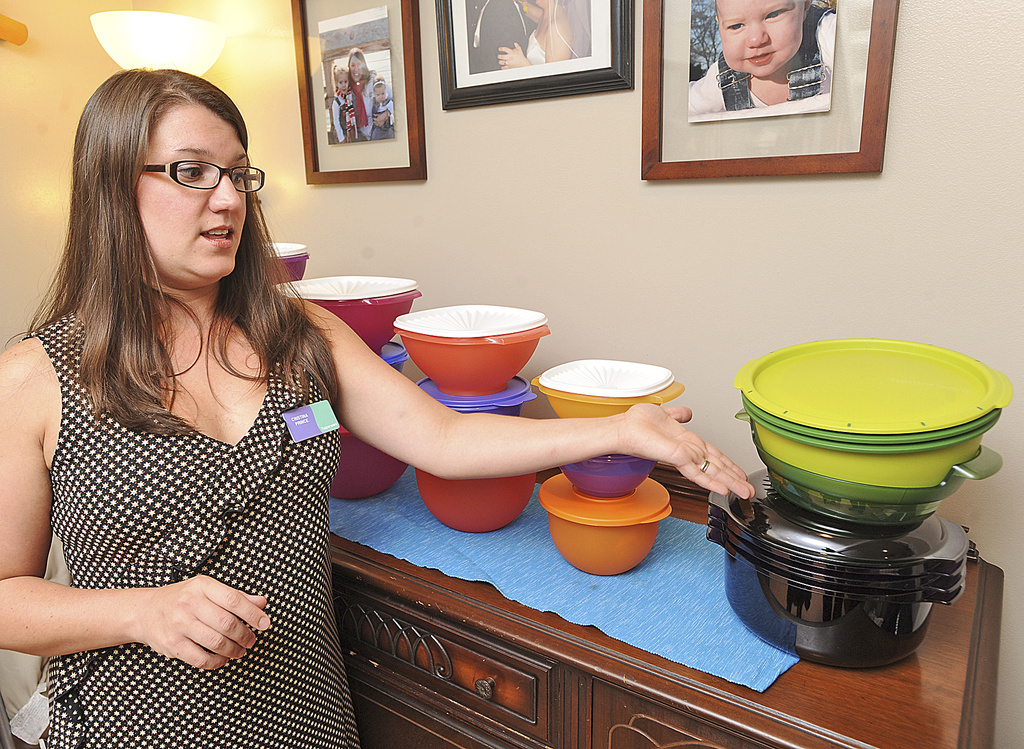Tupperware’s Bankruptcy Filing Signals End of Iconic Brand \ Newslooks \ Washington DC \ Mary Sidiqi \ Evening Edition \ Tupperware Brands, the company behind the revolutionary plastic containers that became synonymous with food storage and direct-to-consumer sales through Tupperware parties, has filed for Chapter 11 bankruptcy. The Florida-based company cited declining sales, competition, and operational inefficiencies as reasons for its financial struggles. Despite efforts to modernize, Tupperware has been unable to regain its former success. The company plans to continue operations during the bankruptcy proceedings and seek a potential sale to preserve the brand.

Tupperware’s Bankruptcy: Quick Looks
- Iconic brand files for bankruptcy: Tupperware Brands has filed for Chapter 11 bankruptcy after years of struggling with declining sales and rising competition.
- Sales model challenges: The company has been hit hard by the decline of its direct-to-consumer sales model, once popularized through Tupperware parties.
- Attempt to stay afloat: Tupperware aims to continue operating through the bankruptcy process and plans to transform into a more digital-first brand.
- Financial struggles: The company reported over $1.2 billion in debt and faces opposition from lenders, who may seek to liquidate its assets.
Deep Look
The maker of Tupperware, the iconic plastic kitchenware brand that defined midcentury America and revolutionized food storage with its airtight containers, has filed for Chapter 11 bankruptcy. For decades, Tupperware was a household name, but the company has been unable to keep pace with the changing market, struggling with falling sales, rising competition, and the limitations of its direct-sales model.
Decline of an Iconic Brand
Founded in 1946, Tupperware Brands was born out of an innovation by chemist Earl Tupper, who created an airtight plastic lid inspired by paint can seals. This invention helped families keep food fresh longer, and the brand became a staple in homes across America, thanks in large part to its unique Tupperware parties. These parties, launched in 1948, allowed women to sell Tupperware to friends and neighbors in social settings, giving many women a sense of financial independence during a time when job opportunities were limited.
Brownie Wise, the inventor of the Tupperware party concept, was later appointed to an executive position in the company, a rare role for a woman at the time. Her direct-sales strategy helped Tupperware pull its products from store shelves and build an empire centered on in-home sales.
While the brand thrived for decades, Tupperware’s traditional sales model has become less relevant in a modern world dominated by online shopping and big-box retailers. Today, consumers can easily purchase food storage products from Amazon, Walmart, and Target, where cheaper, durable alternatives like Rubbermaid and OXO abound.
Struggles with Competition and Modernization
Despite its cultural ubiquity, Tupperware has struggled to adapt to changing consumer habits. In its bankruptcy filing, the company acknowledged that its direct-to-consumer sales—which still account for the majority of revenue—have become less effective, especially as more women have entered the workforce and are no longer as available to host or attend in-home parties.
Tupperware also faced increasing pressure from public health concerns related to the use of plastic, as well as growing environmental awareness. Consumers have been shifting toward more sustainable alternatives like glass and stainless steel, further compounding Tupperware’s decline.
To combat these challenges, Tupperware made several attempts to revitalize the brand. In recent years, it started selling products through Amazon, as well as in Target and Macy’s stores. The company also launched a line of sustainable products in 2019. Despite these efforts, the company’s financial troubles have persisted.
Financial Troubles Pile Up
Tupperware’s financial issues came to a head earlier this year. In its bankruptcy petition, the company reported more than $1.2 billion in debt and $679.5 million in assets. Tupperware also received a non-compliance notice from the New York Stock Exchange (NYSE) after failing to file its annual results with the Securities and Exchange Commission (SEC).
Tupperware had previously sought additional financing in 2022, warning investors about its ability to stay afloat. Despite a brief sales boost during the COVID-19 pandemic—when more people were cooking at home—Tupperware’s overall performance has remained on a downward trajectory.
Financial analysts have criticized the company for being slow to adapt to changing consumer trends. Neil Saunders, managing director of GlobalData, noted that Tupperware’s decline is “not new”, saying that it is difficult to see the company regaining the success it once enjoyed.
While overall sales for food storage products have increased by 18% compared to pre-pandemic levels, according to market research firm Circana, Tupperware’s share of the market has shrunk as consumers have gravitated toward cheaper alternatives or more sustainable options.
Path Forward and Possible Sale
As part of its Chapter 11 bankruptcy filing, Tupperware intends to continue operating while seeking court approval for a potential sale. The company remains hopeful that it can navigate the bankruptcy process and transform into a digital-first, technology-led business. Tupperware President and CEO Laurie Ann Goldman has reassured customers and sellers that the brand isn’t disappearing.
“Whether you are a dedicated member of our Tupperware team, sell, cook with, or simply love our Tupperware products, you are a part of our Tupperware family,” Goldman said in a statement. “We plan to continue serving our valued customers with the high-quality products they love and trust throughout this process.”
Despite these assurances, Tupperware’s new lenders have opposed the company’s bankruptcy plan. They have asked the court to either dismiss the bankruptcy petition or convert it to a Chapter 7 case, which would result in the company’s liquidation. Alternatively, they are seeking permission to take action to collect debts owed to them.
Legacy and Cultural Impact
For decades, Tupperware was more than just a product—it was a cultural phenomenon. The rise of Tupperware parties gave women across the U.S. a chance to earn supplemental income while enjoying a social outlet. The company’s history even extended to pop culture, with PBS releasing a documentary called “Tupperware!” in 2004 and the story behind the company being adapted into a stage play titled “Sealed for Freshness.”
The brand’s impact was felt globally as well. Tupperware products became a household staple around the world, including in Buckingham Palace, where Queen Elizabeth II was famously photographed with Tupperware on her breakfast table. In India, the brand was introduced as a way for women to start their own businesses and achieve financial independence.
Despite its financial troubles, Tupperware’s legacy as a pioneering brand in the consumer goods industry remains strong. However, its future depends on whether the company can successfully navigate its bankruptcy proceedings and adapt to the changing demands of the modern marketplace.







